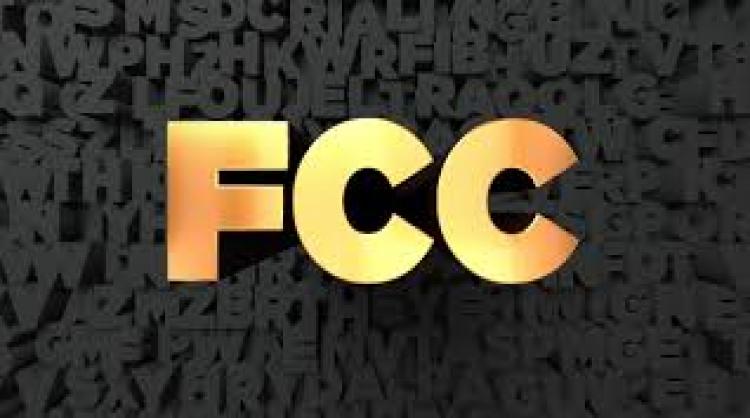FCC Launches Proceeding to Determine Future of Universal Service Fund
December 21, 2021 | by Andrew Regitsky

The FCC ends the year looking toward the future. The recently enacted Infrastructure Act (Act) allocates $65 billion to broadband development. As part of that massive investment, Congress, within 30 days of the Act’s passage, required the FCC to initiate a proceeding to determine the future of the Universal Service Fund (USF). On December 15, 2021, the Commission complied, releasing a Notice of Inquiry (NOI) in Docket 21-476. Industry comments are due on January 18, 2021, with reply comments due on January 31st.
Here is a summary of the questions for which the agency is seeking industry input:
First, the FCC seeks comments on a proposal to define America’s future universal service goals as universal deployment, affordability, adoption, availability, and equitable access to broadband throughout the United States. The agency believes these goals are consistent with the Act’s definition of “universal service goals for broadband” and consistent with section 706 of the Telecommunications Act of 1996. It asks the industry if these are the appropriate goals for universal service, or should additional goals be added? How can it measure progress toward meeting these goals?
Next, the FCC asks how it can measure the effectiveness of the current Fund.
We ask commenters to address whether and how the current USF programs are achieving the proposed broadband goals of universal deployment, affordability, adoption, availability, and equitable access to broadband throughout the United States, and to identify any obstacles that stand in the way of accomplishing those goals... We seek comment on data the Commission should use to evaluate and improve USF program performance. What additional data on USF programs, either from providers or participants, should the Commission be collecting? In addition to providing a rationale for why the Commission should collect any additional data, we encourage commenters to discuss the costs to either participants or providers from collecting the data. Would the benefits provided by the collection of any additional data outweigh the increased burden on program participants? (NOI, at para. 20).
The Commission next seeks comments on how to analyze the Act’s potential impacts on its proposed broadband goals, noting that it must issue a final Report to Congress within 270 days of the Act becoming law.
Finally, we reach the part of the NOI that is likely to draw the most industry interest. The Commission seeks comments on further actions it could take to improve its ability to achieve its universal service goals for broadband. It reviews the High-Cost Fund first. This is the program usually associated with universal service. The High-Cost Fund is designed to ensure that consumers in rural, insular, and high-cost areas have access to modern communications networks capable of providing voice and broadband service, both fixed and mobile, at rates that are reasonably comparable to those in urban areas.
We seek comment on the impact of the Infrastructure Act on the High-Cost program. What changes, if any, should we consider to the High-Cost program in light of the Infrastructure Act and other recent developments? Are there changes that should be made in light of the additional funding provided by the Infrastructure Act? How can we best coordinate the High-Cost program with the programs created by the Infrastructure Act to achieve our universal service goals, particularly the deployment of broadband to 100% of the people in the United States? What role will the High-Cost program have in the future given the evolving level of universal service? What data should be collected from recipients of the program, and how should this data collection take place? How can we protect against waste, fraud, and abuse in the High-Cost program, particularly in light of the Infrastructure Act? (Id., at para. 31).
The Commission then turns to its Lifeline program, designed to ensure consumers below the poverty line maintain dial tone service. The Commission requests comments on how it can continue to ensure that the Lifeline program effectively achieves its service goals for broadband in light of the Infrastructure Act. What changes, if any, should be considered to the Lifeline program?
The Commission makes similar requests for its E-Rate program which provides discounted services for schools and libraries and its Rural health Care program providing discounts for rural hospitals and clinics. How can it ensure effective universal service for these programs under the Infrastructure Act?
Then, the Commission asks the industry how it can sustain universal service into the future.
Today, telecommunications companies must pay a percentage of their interstate end-user revenues to the Universal Service Fund. This percentage is called the contribution factor. The contribution factor changes four times a year and is increased or decreased depending on the needs of USF programs. The USF contribution factor for the fourth quarter of 2021 is 29.1 percent, up from 6 percent in 2001. The Commission requests comment on proposals to improve the stability of the quarterly factor. Id., at para. 44).
Of course, the elephant in the room is that the current contribution methodology for contributing to the USF is doomed as interstate minute-of-use revenues continue to decrease. The Commission should make fixing this issue its most important priority for 2022.

